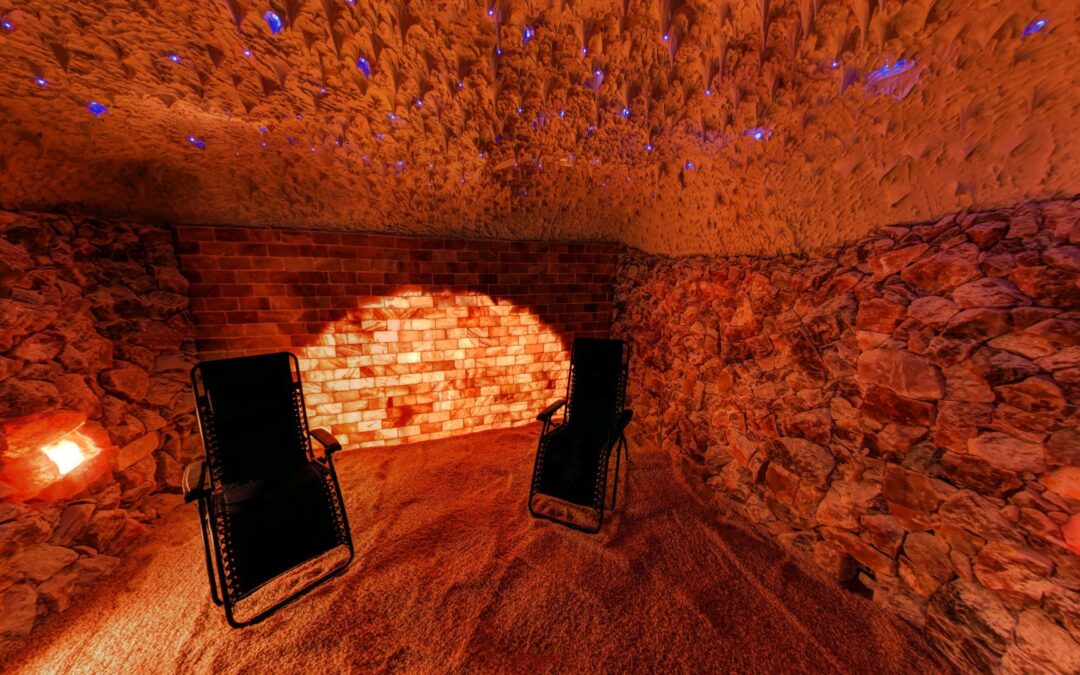Halotherapy, commonly known as salt therapy, is a holistic treatment that involves breathing in air saturated with micronized salt particles, believed to promote health and well-being.
This natural therapy has roots stretching back centuries and has been utilized in various cultures for its therapeutic benefits.
This article delves into the definition of halotherapy, explores its origins, and examines its historical uses in traditional medicine.
Definition of Halotherapy
Halotherapy is derived from the Greek word “halos,” meaning salt. It is a form of alternative medicine that involves inhaling microscopic salt particles into the respiratory system. These salt particles are generated in a controlled environment, often referred to as a salt room or salt cave, where the walls and floor are also covered with salt.
The therapy can mimic the microclimate of a natural salt cave. The practice is said to cleanse the respiratory system, skin, and body, promoting better breathing, healthier skin, and overall wellness.
Origins of Halotherapy

The Khewra Salt MineThe origins of halotherapy can be traced back to the ancient Greeks, who were among the first to recognize the healing properties of salt.
Hippocrates, the father of modern medicine, often recommended salt inhalation to his patients for respiratory issues. However, the modern practice of halotherapy is most commonly associated with Eastern Europe and particularly with salt mines found in these regions.
The discovery that led to the widespread interest in halotherapy occurred in the 19th century. A Polish physician named Feliks Boczkowski noticed that workers in the Wieliczka Salt Mine had markedly fewer respiratory illnesses compared to the general population. Boczkowski, intrigued by this observation, attributed the miners’ good health to the air in the salt mines, which was saturated with salt particles. He proposed using salt mines for therapeutic purposes, marking the beginning of speleotherapy, a precursor to modern halotherapy, which involves spending time in the microclimate of caves or mines for health benefits.
Historical Uses in Traditional Medicine
Following Boczkowski’s observations, salt mines and caves in Eastern Europe began to gain popularity as therapeutic destinations. Patients with various respiratory conditions, such as asthma, chronic bronchitis, and allergies, sought treatment in these unique microclimates. The therapeutic practice became formalized with the establishment of sanatoriums within or near salt mines, offering structured treatment programs under medical supervision.
In the mid-20th century, scientific interest in halotherapy grew, leading to the development of artificial salt rooms that aimed to replicate the conditions of natural salt mines. This allowed for the broader application of halotherapy beyond the geographical limitations of salt mines, making it accessible to a wider population. These salt rooms used halogenerators to disperse fine salt aerosol into the air, closely mimicking the natural salt cave environment.
Modern Halotherapy and Its Applications
Today, halotherapy is offered in spas, wellness centers, and standalone salt therapy facilities around the world.
While the practice has evolved, the core principle remains the same: exposure to airborne salt particles is believed to offer health benefits, especially for respiratory and skin conditions. Proponents of halotherapy claim that it can reduce inflammation, clear mucus from the lungs, improve lung function, and alleviate skin conditions like eczema and psoriasis.
Conclusion
Halotherapy, or salt therapy, is a practice with deep historical roots, evolving from ancient Greek medicine to a modern alternative therapy enjoyed worldwide. Its origins in the salt mines of Eastern Europe have paved the way for contemporary applications in treating respiratory and skin conditions.
While scientific research on halotherapy’s effectiveness is ongoing, its popularity underscores a continuing interest in natural and holistic approaches to health and wellness. As with any alternative therapy, individuals should consult with healthcare professionals before incorporating halotherapy into their health regimen.
We hope you found the information above useful. Leave a comment below, or contact us if you have any questions.
